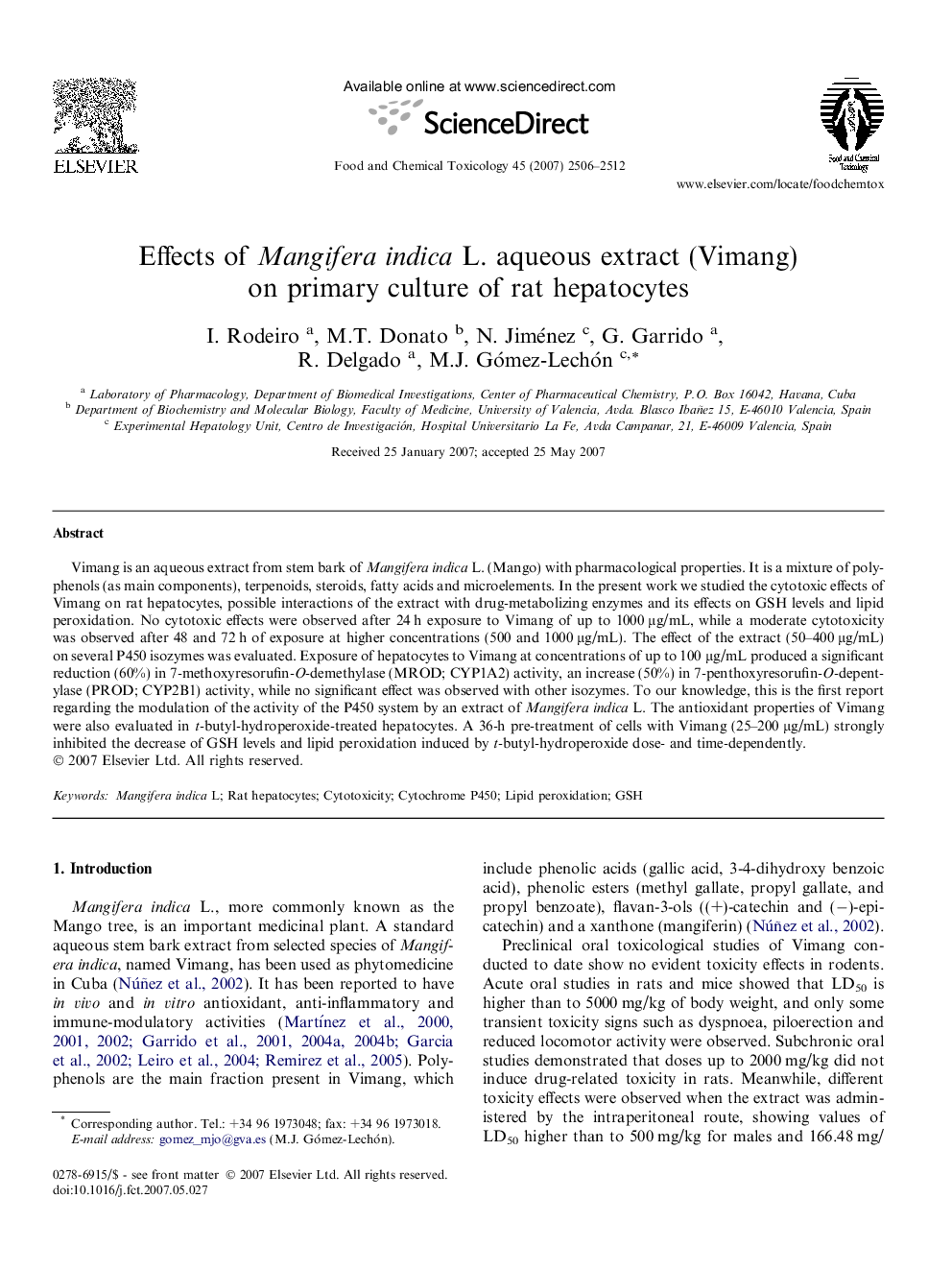| Article ID | Journal | Published Year | Pages | File Type |
|---|---|---|---|---|
| 2587845 | Food and Chemical Toxicology | 2007 | 7 Pages |
Vimang is an aqueous extract from stem bark of Mangifera indica L. (Mango) with pharmacological properties. It is a mixture of polyphenols (as main components), terpenoids, steroids, fatty acids and microelements. In the present work we studied the cytotoxic effects of Vimang on rat hepatocytes, possible interactions of the extract with drug-metabolizing enzymes and its effects on GSH levels and lipid peroxidation. No cytotoxic effects were observed after 24 h exposure to Vimang of up to 1000 μg/mL, while a moderate cytotoxicity was observed after 48 and 72 h of exposure at higher concentrations (500 and 1000 μg/mL). The effect of the extract (50–400 μg/mL) on several P450 isozymes was evaluated. Exposure of hepatocytes to Vimang at concentrations of up to 100 μg/mL produced a significant reduction (60%) in 7-methoxyresorufin-O-demethylase (MROD; CYP1A2) activity, an increase (50%) in 7-penthoxyresorufin-O-depentylase (PROD; CYP2B1) activity, while no significant effect was observed with other isozymes. To our knowledge, this is the first report regarding the modulation of the activity of the P450 system by an extract of Mangifera indica L. The antioxidant properties of Vimang were also evaluated in t-butyl-hydroperoxide-treated hepatocytes. A 36-h pre-treatment of cells with Vimang (25–200 μg/mL) strongly inhibited the decrease of GSH levels and lipid peroxidation induced by t-butyl-hydroperoxide dose- and time-dependently.
